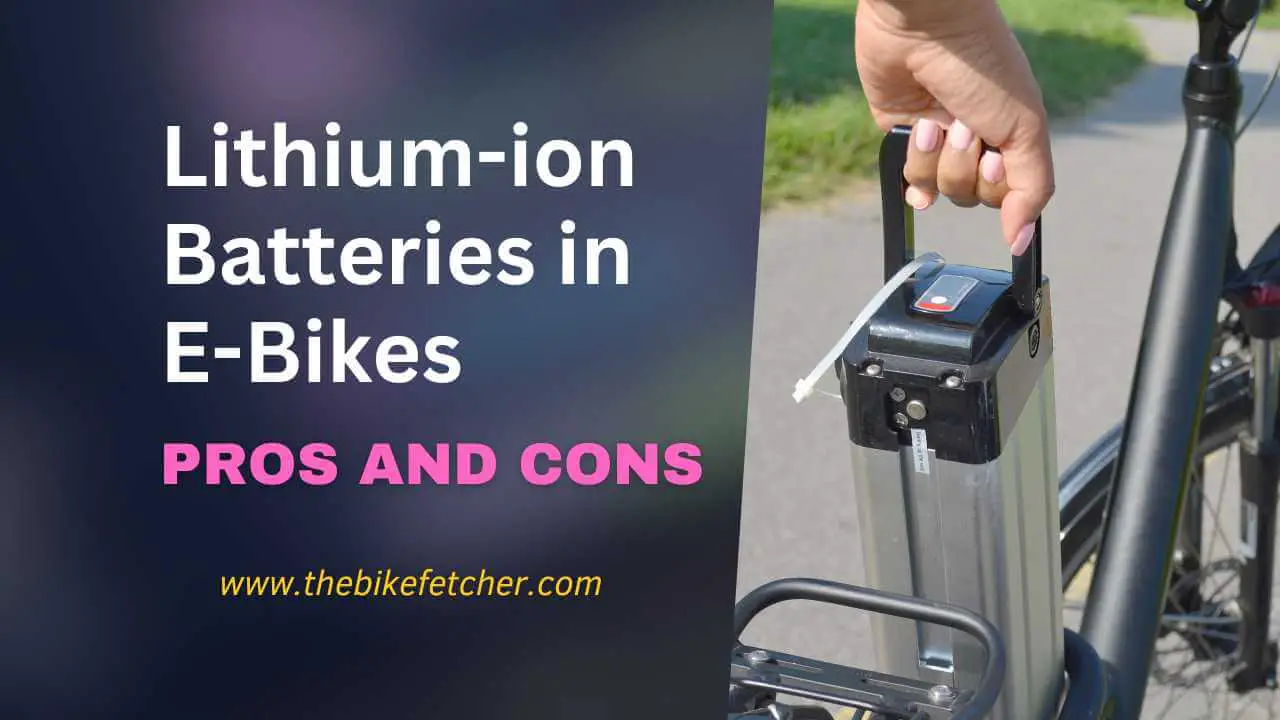The lithium-ion battery has become increasingly popular in the past few years. They offer many advantages over traditional batteries such as they are lightweight, small in size, offering high energy density, and having a longer lifespan.
Just like any other technology, lithium-ion batteries also have some limitations. One of the safety concerns about lithium batteries is that they can catch fire in some circumstances.
That’s why we have come up with the pros and cons of lithium-ion batteries for ebikes, why lithium-ion batteries are the most preferred ebike batteries and why are lithium-ion batteries better than any other type of battery.
In this article, we are also taking a look at why lithium-ion batteries catch fire and how you can prevent these batteries from catching fire.
Types of Batteries Used in Electric Bikes
There are many kinds of batteries available that are used in electric bikes such as lithium-ion batteries, nickel-metal-hydride, and of course lead acid batteries and more. Let’s learn more about them in detail.
Lead Acid Battery
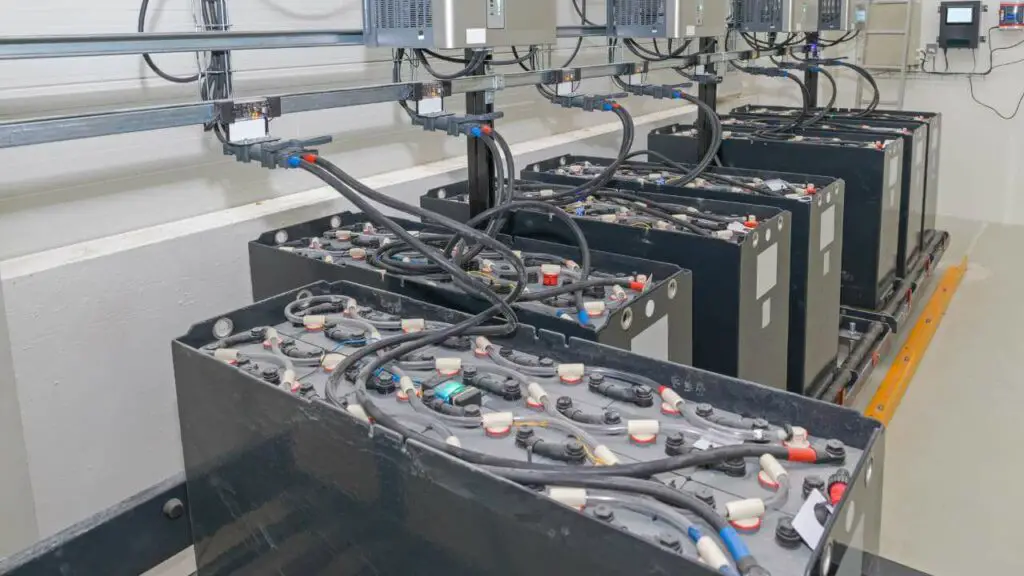
Also known as a sealed-acid battery (SLA) is one of the oldest battery types (discovered in the 1800s). The lead acid battery needs more space as they are big & heavy. That’s why they are used in larger electric vehicles such as electric cars, vans, and cheap electric bikes.
Well, Lead acid batteries are much cheaper to produce, That’s why these batteries can still be found in budget PEVs such as Razor kids scooters.
Also, the weight-to-volume ratio of these batteries is very poor compared to lithium-ion batteries which are lightweight and have 10 times more energy density.
One more drawback of lead acid batteries that you must consider i.e., they have a very short lifespan (2-5 years) or 200 to 400th charging cycles whichever is earlier.
Therefore, based on our experience and the above facts, lead-acid batteries are not a good option for electric bikes. You rarely find any ebike with a lead acid battery except Razor Kids ebikes because almost every brand use lithium-ion and nickel metal hydride batteries.
Nickel-metal hydride battery
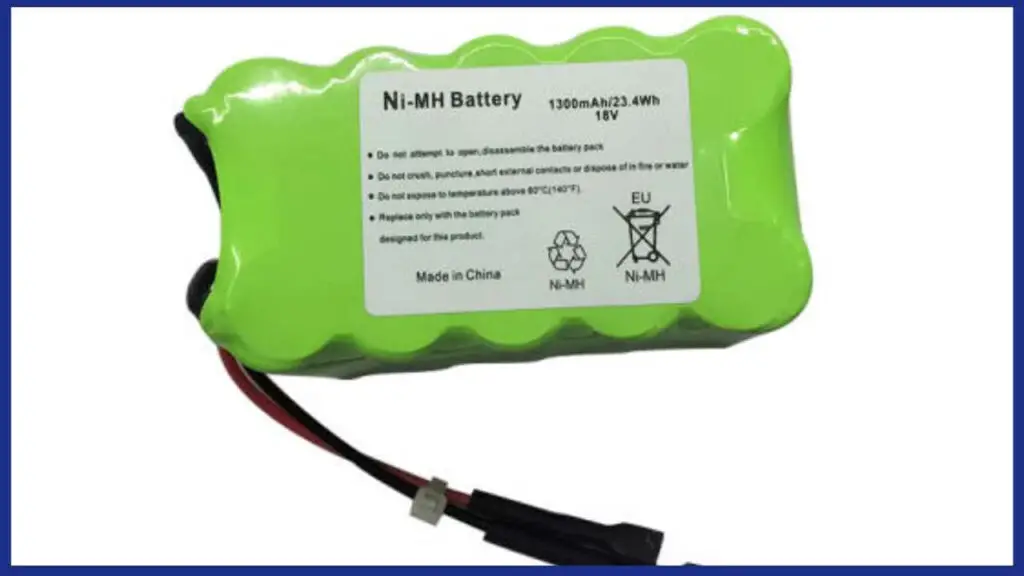
A nickel-metal hybrid battery, or NiMH, is a type of rechargeable battery used in electric bikes, electric scooters, and EVs. These batteries have a high energy density and a long life span compared to lead-acid batteries.
They are safer than lithium-ion batteries because their energy density is higher, and their active materials are fewer. However, Nickel-metal hydride batteries take a very long time to charge i.e., around 10-12 hours (depending on capacity & charger).
If you charge the NiHM battery with a high amp charger, it may get damaged internally. Also, these batteries don’t perform properly under extreme temperatures (too hot or too cold).
Also, a nickel-metal hydride battery lasts only for 2–3 years or around 500 charge cycles whichever is earlier. Due to the above-mentioned reasons, brands don’t use NiMH batteries in their electric bikes.
Lithium-Ion Battery
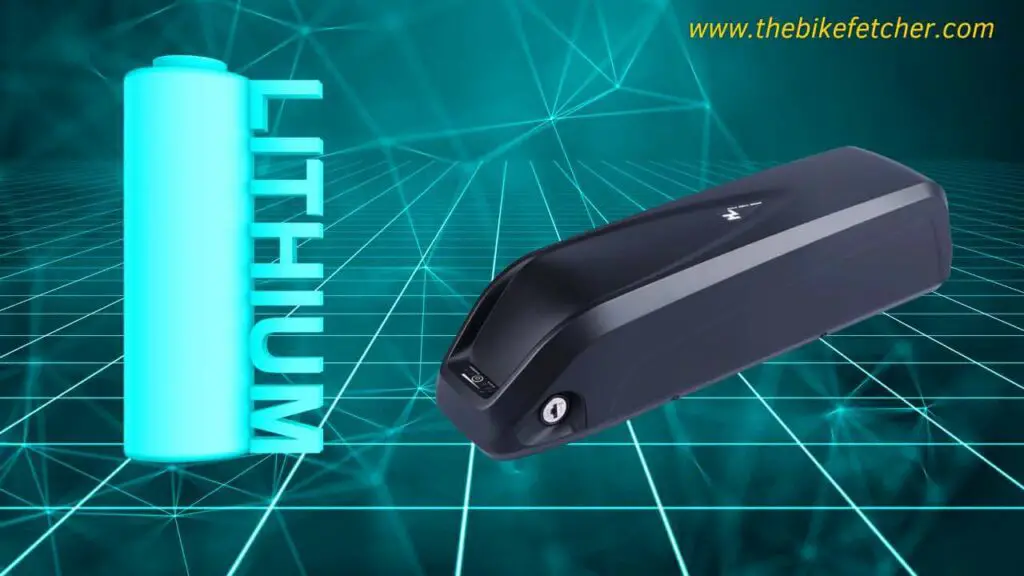
According to the University of Washington, “A lithium-ion (Li-ion) battery is an advanced battery technology that uses lithium ions as a key component of its electrochemistry. They are capable of having a very high voltage and charge storage per unit mass and unit volume”.
Therefore, Lithium-ion batteries are the most preferred rechargeable batteries for ebikes, e-scooters, and electric cars. They are also used in mobile devices, laptops, electric vehicles, and aerospace applications as they provide the best performance over other battery types.
These batteries have many advantages, such as higher energy density, low self-discharge, no memory effect, and a long life span, making them the first choice for electric bikes. Lithium-ion batteries are lightweight and costly e-bike batteries.
Additionally, Lithium-ion batteries last for 3–5 years or 500 to 1000 charge cycles whichever is less.
Related: How long to charge a 36v ebike battery?
Which is the best battery type for electric bikes?
There is no doubt that lithium-ion batteries are the best among all the batteries available for electric bikes on the market. Lithium-ion batteries last much longer than lead-acid and nickel-metal hydride batteries and have high charge cycles. Lithium-ion batteries have many advantages that make them the best electric bike battery. Let’s discuss them.
Pros and Cons of Lithium-ion Batteries for Ebikes
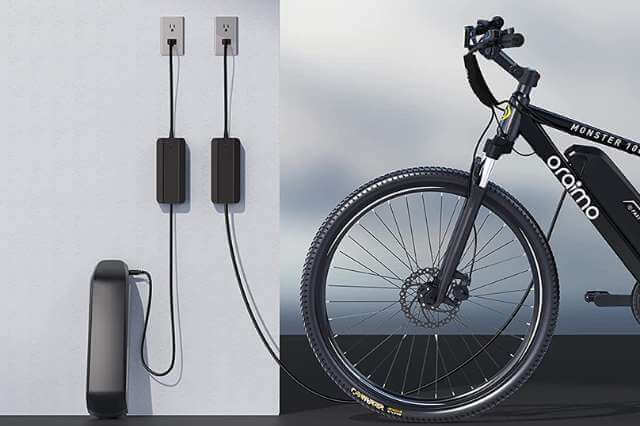
As you know lithium-ion batteries are the most commonly used in electric bikes as compared to other types of batteries. You must also know the advantages and disadvantages of lithium batteries in ebikes just like any other technology.
Advantages of lithium-ion batteries for electric bikes
- Lithium-ion batteries are much lighter and smaller in size as compared to lead-acid batteries so a single bike frame can have 2 or 3 lithium-ion batteries.
- There are a variety of lithium-ion batteries available on the market for different types and models of electric bikes.
- Lithium-ion batteries have a much higher and longer lifespan of about 3–5 years as compared to lead-acid batteries.
- Lithium-ion batteries have a much higher energy density, which is necessary to operate and use e-bikes longer in between charges.
- The Li-ion batteries are easy to maintain; once you buy them, you don’t have to spend too much money or effort to maintain them.
- They get charged in a few hours and therefore, lithium-ion battery charging cost is very cheap.
- Lithium e-bike batteries have a much lower self-discharge rate as compared to other e-bike batteries.
- These batteries give good, constant voltage as lithium cells have a high voltage of about 3.6 compared to the lead acid battery (2.0).
- Lithium-ion batteries have the highest charging cycles among all other types of e-bike batteries, at about 1000 times.
Disadvantages of lithium-ion batteries for e-bikes.
- Lithium-ion batteries are much more expensive (five times more costly) as compared to other types of electric bike batteries.
- They are more likely to get damaged by extreme temperatures, so you need to be careful when using them in these conditions.
- Sometimes, lithium-ion batteries may catch fire; hence, when it comes to safety, lithium batteries need an upgrade.
- Lithium-ion batteries start deteriorating after they are manufactured, whether you use them or not. The battery will reduce its lifespan.
Why do Lithium Batteries Catch Fire?

Lithium-ion batteries have become more popular and common in recent times. There is no doubt that lithium-ion batteries are the most commonly used batteries in electric vehicles, mobile phones, laptops, and cameras.
But these batteries are temperature-sensitive and can catch fire if not used correctly or taken care of well.
Here are some reasons why lithium-ion batteries catch fire and explode:
1. Due to battery damage
Electric bike batteries are very powerful because of the lithium-ions that are present inside the battery. Batteries are used to store the power. Lithium-ion is very reactive; any damage to the battery can cause it to become too hot, short circuit, and lead to thermal runaway. and this can cause the battery to catch fire.
2. Due to faulty batteries
Not every lithium battery available is of high quality or built safely. Sometimes, small manufacturers or small companies make two kinds of batteries: good batteries and bad batteries.
If you buy a bad-quality battery from a local area (sites) or not from a good brand. There are chances that this may lead to thermal runaway and cause the battery to catch fire. Always purchase a UL-certified battery from a reputed brand.
3. Due to a fake (local) battery
If the battery is not damaged but is fake or Chinese, it can also lead to thermal runaway and cause the battery to explode and catch fire. So you must buy an ebike battery from a well-reputed brand or manufacturer and make sure the battery is certified and tested to avoid any fire-related problems.
How to Prevent Lithium Battery Fire in Ebikes [5 Pro Tips]
- Make sure to buy a battery from a well-reputed brand with UL certification, as the battery is the most important part of an e-bike.
- Avoid overcharging the battery, overnight charging, and charging at home to prevent the risk of catching fire.
- Take good care of your battery; inspect it for signs of physical damage and check the temperature whenever you are charging it.
- Use a specific compatible battery according to your ebike motor and a specific charger designed for your e-bike model to avoid any fire-related problems.
- Keep your batteries away from any kind of flammable material to prevent fire from catching and spreading.
Conclusion: Advantages and Disadvantages of Lithium Batteries in Ebikes
Considering all that has been stated above and our experience, the following conclusions are drawn:
The battery of an ebike is the most important part as it stores and supplies power. Therefore, you must use a good-quality battery i.e., UL Certified Lithium-ion batteries are the best batteries available on the market.
These batteries are lightweight, small in size, a bit expensive but last longer, and have high charging cycles (durable). But just like every other technology, these batteries also have a few limitations that we discussed above.
However, By proper maintenance and care on the lithium battery and ebike, you can make them last for a long time.
I hope you have understood the pros and cons of lithium-ion batteries for ebikes. Do share this article with your friends if you found it helpful.
FAQs on Lithium-ion Battery Pros and Cons
-
How long does a lithium-ion battery last in an e-bike?
A well-maintained lithium battery can last somewhere between 3-5 years. It all depends upon how long you charge, which charger you use, and how you ride the ebike. If you don’t take care of the battery well, it will last for one year only.
-
What size lithium-ion battery to use on my 250w ebike?
Well, lithium batteries come with 24v, 36v, 42v, 48v, and so on. Out of these 36v 10 Ah lithium battery is the best option for a 250w ebike as this combination of batteries can provide 360 Wh of power which is more than enough for a 250w ebike. Read more.
-
What size battery to use on my 350w electric bike?
Lithium-ion batteries with 36v 15Ah or 48v 10Ah are perfect for powering the 350w electric bike. An ebike with a 350 watts motor needs at least 350w from the battery and these batteries are capable of providing minimum power of 350 watts.

